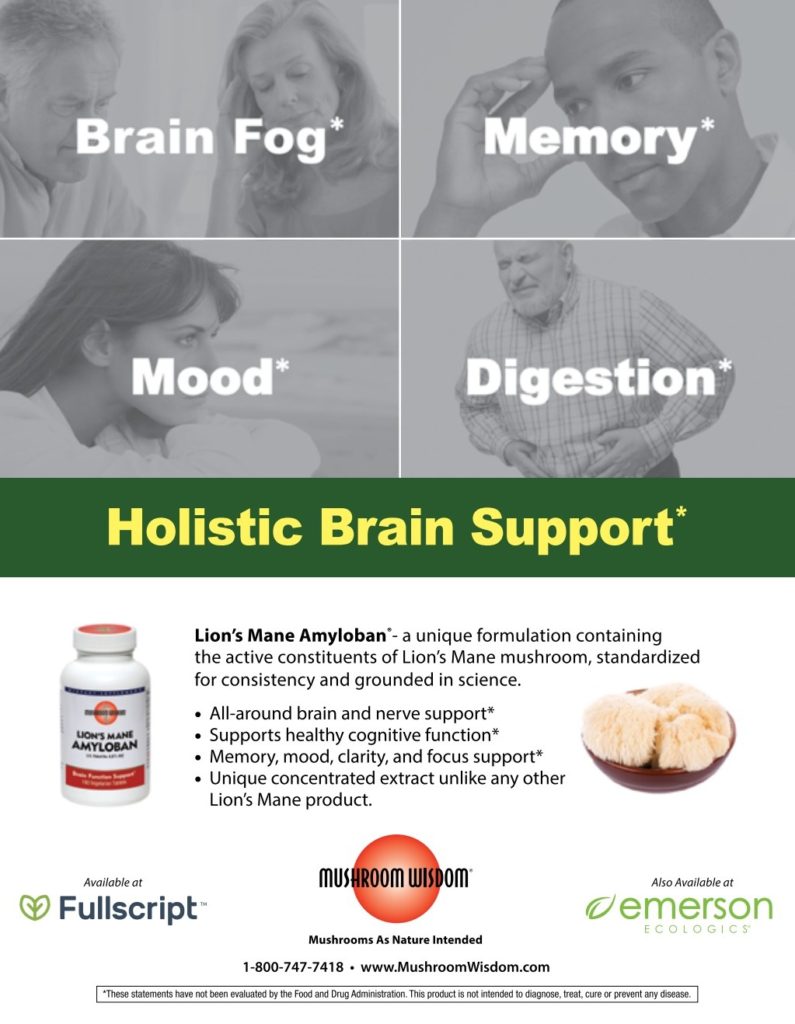by Leigh Erin Connealy, MD
The American Cancer Society’s annual estimates of cancer diagnoses and deaths provided some good news during a year dominated by COVID-19 headlines. Cancer Statistics, 2020 reported that the cancer death rate decreased by 29 percent between 1991 and 2017, and the decline of 2.2 percent from 2016 to 2017 was the greatest ever annual drop in cancer mortality.1
These positive trends were attributed to a number of causes, including declines in smoking; advancements in treatment, especially for hematopoietic and lymphoid cancers; and improvements in early detection. However, the researchers also pointed out that progress is slowing for prostate, breast, colorectal, and cervical cancers, which are common targets of screening. Furthermore, for cancers such as liver, lung, pancreas, esophagus, and ovarian that are generally not diagnosed until later stages, prognosis remains poor.
This underscores the need for more sensitive tests for the early detection of cancer. Cancer begins developing in the body years before it becomes symptomatic or can be picked up by the usual screening and diagnostic tests. Very early detection with tests that are often overlooked by conventional doctors gives physicians and patients the best opportunity to halt cancer progression and even reverse abnormal cellular changes before they develop into full-blown malignancy.
The Cancer Profile
The Cancer Profile is a comprehensive blood test that measures a number of hormones, cancer antigens, proteins, and enzymes. Analyzed as a whole, these markers reveal biochemical changes that occur when cancer is present or developing anywhere in the body.
Tests include human chorionic gonadotropin (hCG), which is produced not only during pregnancy but also by cancer cells. Any amount of hCG in the blood or urine may be indicative of cancer.2 Another is phosphohexose isomerase (PHI), also called autocrine motility factor. PHI is an enzyme that regulates anaerobic metabolism. An elevated PHI suggests that cellular metabolism may be shifting towards low-oxygen glycolysis, which makes the body more hospitable to cancer growth.3
Thyroid stimulating hormone (TSH) is included because thyroid hormones’ essential role in growth, differentiation, and metabolism has a significant effect on the development of cancer.4 The Cancer Profile measures gamma-glutamyl transpeptidase (GGTP), a marker of liver disease that is also an early predictor of several types of cancer.5 In addition, it tests carcinoembryonic antigen (CEA), which is elevated in most types of cancer, and dehydroepiandrosterone sulfate (DHEA-S), an adrenal hormone linked with immune function and resistance to stress.
Developed by Emil Schandl, PhD, founder of American Metabolic Laboratories, the Cancer Profile can identify cancer in its early developmental stages, ten to 12 years before it shows up on routine tests.6 Because it provides warnings that cancer may be brewing, it is one of the best tools for cancer prevention. It is also useful for monitoring the effectiveness of cancer treatments and detecting early signs of recurrence.
RGCC Oncotrace
One of the problems with conventional cancer tests and treatments is that they fail to detect and eliminate circulating tumor cells (CTCs) and cancer stem cells (CSCs). CTCs are cancer cells that are shed from tumors and released into the vascular system. As these cells circulate through the body, they may nest in various organs and are therefore a major source of metastasis and cancer recurrence. CSCs are residual cells with stem cell-like properties that make them resistant to drugs and other treatments that kill most cancer cells.7 Together, CTCs and CSCs are responsible for 95 percent of metastatic cancer and cancer deaths.
Oncotrace is a blood test developed by RGCC, an international medical genetics company. Referred to as a “liquid biopsy,” it uses multiple cell markers to identify CTCs and CSCs in the blood.8 This may be the most important test for detecting metastasis and cancer recurrence. A patient could be declared cancer-free following treatment, but the only way to be sure is to test for CTCs and CSCs.
RGCC also offers blood panels that evaluate the sensitivity of each patient’s cancer cells to dozens of common chemotherapy drugs and natural anticancer agents.9 This allows physicians to develop personalized treatment plans that target each patient’s genetically unique cancer.
Nagalase Test
Alpha-N-acetyl-galacto-samini-dase, commonly called nagalase, is an enzyme secreted by cancerous cells that shuts down a key aspect of the immune response that keep cancer in check. It interferes with the conversion of precursor proteins to Gc macrophage-activating factor (GcMAF), a protein that triggers macrophage activity. An increase in nagalase levels in the blood has been directly correlated with tumor burden, cancer aggressiveness, and disease progression in a wide range of cancer types.10
Testing serum nagalase levels is a reliable means of detecting cancer, monitoring progression and treatment response, and fine-tuning treatment protocols. Interestingly, a GcMAF-based immunotherapy has been developed that has proven effective in reducing serum nagalase levels and improving clinical outcomes in patients with various stages and numerous types of cancer.11 Nagalase levels are also increased in certain viral infections, including HIV, HSV-1, and HSV-2, suggesting additional applications for this test. It is available through Health Diagnostics and Research Institute.12
Comprehensive Blood Tests
All doctors order blood tests for their patients, but many of them are unaware of the insights that some of these tests reveal about cancer risk and progression. For instance, a complete blood count (CBC) provides valuable information about cancer risk and response to treatment. Studies have shown that even a modestly elevated hemoglobin A1c (HbA1c) is associated with an increased risk of most types of cancer.13 A high HbA1c level signals the need for diet changes and other interventions to control blood sugar, since diabetes is a well-established risk factor for cancer.14
Because excessive inflammation is present not only in cancer but in many chronic degenerative diseases, high-sensitivity C-reactive protein (CRP) is by no means a rule-out test for cancer.15 Nevertheless, cancer should be considered in patients with elevated inflammatory markers, and normalizing inflammation is an important goal in prevention and treatment. Multiple studies link a low blood level of vitamin D with an increased risk of cancer.16 Bringing the 25-hydroxy vitamin D level into the optimal range of 50–75 ng/mL with supplemental vitamin D3 is a cornerstone of a nutritional approach to cancer prevention.
Other blood tests that provide actionable information include natural killer (NK) cell function test, which measures the activity of critical immune cells, and beta-hCG (also called quantitative hCG), a tumor marker as discussed above. All told, comprehensive blood tests provide signs of early disease and can help doctors devise prevention and treatment strategies.
Heavy Metal Testing
Acute heavy metal poisoning, usually due to workplace or accidental exposure, is a medical emergency that presents with obvious symptoms such as abdominal pain, vomiting, chills, and shortness of breath. Low-level exposure to mercury, lead, cadmium, arsenic, and other heavy metals also has cumulative adverse effects and can cause organ damage and increase the risk of multiple diseases, including cancer.17
Although acute poisoning is rare, we are all exposed to toxic heavy metals in the air we breathe, the water we drink, the food we eat, the personal care products we use, and the amalgam fillings in our mouths. Unfortunately, low-level exposure often goes unnoticed, and the resultant fatigue, headaches, aches and pains, and attention and memory problems are usually attributed to other causes. A number of labs, including Doctors Data, test heavy metal concentrations in blood, urine, stool, and/or hair samples. Taking steps to lighten patients’ toxic burden via removal of amalgams, dietary changes, targeted supplements, and/or oral or intravenous chelation therapy often improves symptoms and reduces the risk of serious disease.
Food Sensitivity Testing
Diet is an important determinant of health, and poor dietary habits go a long way toward explaining our epidemic of obesity and chronic diseases. Even a reasonably good diet can stress the body if it contains foods that cause an allergic or hypersensitive response. Therefore, identifying problematic foods and cleaning up the diet is an important step in the prevention and treatment of cancer and other diseases.
Food allergies were once believed to be relatively rare. But a 2019 study involving more than 40,000 adults found that 10.8 percent of participants had symptoms after eating specific foods that were consistent with IgE-mediated immune reactions – and 38 percent of them reported at least one food allergy-related emergency room visit.18 Skin-prick, scratch, and blood tests for IgE antibodies are reliable tests for diagnosing food allergies, and strict avoidance of the offending foods is the only treatment.
Nineteen percent of participants in the above survey thought they had a food allergy, but based on symptoms, the researchers concluded it was more likely a sensitivity or intolerance. Food intolerances have many causes and trigger many symptoms. Lactose intolerance, for example, is a genetic lactase deficiency that causes bloating and gas, while non-celiac gluten sensitivity may manifest as anything from brain fog and migraines to joint pain and digestive disorders. These problems are also common signs of other conditions, so they are rarely attributed to diet.19
While IgE testing is a proven means of identifying allergies, it does not pick up food intolerances. Breath tests can determine intolerances to fermentable carbohydrates such as fructose and lactose, and Meridian Valley Lab, US BioTek, and other companies offer blood panels that test for IgG and other non-IgE-mediated reactions to scores of foods. Another method is the elimination diet, which is quite reliable, especially when done under the guidance of a healthcare professional.
Cologuard Stool DNA Test
With early detection, the five-year survival rate of patients diagnosed with colorectal cancer exceeds 90 percent. Yet screening rates lag far behind the CDC’s stated goals, and colorectal cancer is the third-leading cause of cancer deaths in the US.20 The most common screening tests for men and women of average risk, beginning at age 45, are annual fecal occult blood tests (FOBT) or colonoscopy every 10 years. In recent years, stool DNA testing has been approved as another alternative.
Cologuard is a test that analyzes DNA in cells collected from a stool sample. It identifies DNA changes suggestive of colon cancer or precancerous polyps as well as blood in the stool, another potential sign of cancer. Even though it is not as accurate as colonoscopy, which is the gold standard for colorectal cancer screening, it is more sensitive than FOBT. In a study published in the New England Journal of Medicine, the stool DNA test detected 92 percent of colon cancers, although it was less effective at detecting precancerous polyps, plus 13 percent of tests were false positives and 8 percent were false negatives.21
Stool DNA testing is not recommended for anyone with a personal or family history of colorectal cancer or previous abnormal findings on colonoscopy. However, because it can be done at home with a mailable test kit, is covered by Medicare and many insurers, and requires no diet restrictions, bowel prep, or anesthesia, stool DNA testing is a good option for early detection.
Thermography
Thermography is a method of screening for breast cancer that uses infrared imaging technology to measure heat, inflammation, and vascular changes within the breast that are indicative of cancer. Researchers report that thermography can detect 86 percent of nonpalpable breast cancers, find some cancers that were missed by mammography, and identify abnormal findings eight to 10 years before a mass could be detected on a mammogram.22 For instance, vascular patterns such as an asymmetrical increase in vein development in one breast suggests that the body may be creating new blood vessels to feed a nascent tumor.23
There is some controversy about thermography as a screening tool, and some studies have found it to be less accurate than mammography. But mammograms have a number of shortcomings. They miss about 20 percent of breast cancers; and false positives, which lead to unnecessary testing and overtreatment, are even more common. In addition, repeat mammograms expose patients to potentially harmful radiation that could potentially cause cancer.24
For all these reasons and more, thermography is, in my opinion, a preferable tool for breast cancer screening, early detection, and tracking progress of patients during and after treatment.
Ultrasound, PET, MRI, and CT Scans
The screening and diagnostic scans that are common tools of conventional oncology provide a wealth of information. Positron emission tomography (PET) scans, which “light up” cancer cells and other areas of heightened metabolic activity, are great for diagnosing cancer and metastasis. Magnetic resonance imaging (MRI) uses magnetic fields and radio waves to provide extraordinarily detailed images that help pinpoint tumor location and stage cancer. Computed tomography (CT) scans produce in-depth images of organs, soft tissues, and tumors by taking multiple X-rays from different angles. Ultrasound, an exceptionally safe technology, uses high-frequency sound waves to visualize tumors, cysts, and other soft tissue structures in the body.

Although PET, MRI, CT, and ultrasound are useful for guiding treatment, they can only visualize cancers that have reached a certain size – and a tumor becomes apparent only after it has been growing for years and has amassed tens of billions of cells.25 In addition, these scans are unable to identify circulating tumor cells and cancer stem cells until they have nested and grown to an appreciable size. By the time a tumor can be detected, it is quite far along on the cancer developmental trajectory.
Another drawback with CT and PET scans is that they expose patients to hundreds of times more radiation than a chest X-ray, and excess exposure to medical radiation has been linked with an increased risk of developing cancer.26 Of course, these scans are sometimes necessary, especially for patients with more advanced disease. For early detection, however, they are of limited value.
BioImmune Survey Bioenergetic Testing
Bioenergetic testing is an underutilized type of testing that measures the flow of energy through the body’s meridians, or energy pathways. The BioImmune Survey we use at my clinic involves a computerized electrodermal screening device that tests the galvanic skin response and monitors energy imbalances suggestive of problems and their precise locations in the body.
The goal of bioenergetic testing is early detection and disease prevention. Subtle imbalances show up on bioenergetic testing long before they become evident on conventional bloodwork and scans. This test detects the presence of low-level infections, toxins, parasites, nutrient deficiencies, and other abnormalities that pave the way for the development or progression of cancer and other diseases. Bioenergetic testing also suggests specific remedies, lifestyle changes, and treatments that are most likely to be of benefit for boosting immune function and enhancing overall health.
Conventional doctors look askance at bioenergetic testing, and it is not embraced by all integrative physicians. However, in my 30-plus years of practicing medicine, I have found it to be an excellent adjunct to other tests.
Nutritional Testing
Nutrition is a foundation of integrative medicine, which underscores the importance of personalized nutritional counseling and testing for food allergies and intolerances. However, diet is not the only determinant of nutritional status. Genetics, gut health, age, and underlying disease burden are also key factors.
A number of tests are available for evaluating nutritional status. One is SpectraCell’s Micronutrient Test. Rather than simply measuring blood levels of various nutrients, this test assesses functional deficiencies by determining how effectively 31 essential vitamins, minerals, amino acids, fatty acids, antioxidants, and metabolites are utilized within the white blood cells. This provides a clear picture of how various nutrients are functioning in the body.
Another is Genova Diagnostics NutrEval, a comprehensive test that includes both urine and blood analyses. Tests include organic acids, which provides insight into dysbiosis and malabsorption, mitochondrial and neurotransmitter metabolism, and toxin exposure. Amino acid and fatty acid analyses assess protein digestion and absorption and reveal imbalances in the ratios of omega 3, 6, and 9 and other fatty acids. Markers of oxidative stress and measurements of coenzyme Q10, glutathione, and other antioxidants are included, along with intracellular levels of nutritionally important minerals as well as toxic heavy metals.
Even subtle deficiencies of vital micronutrients can make the body more vulnerable to cancer and other diseases. The results of these two tests allow practitioners to recommend a therapeutic nutritional supplement program based on each patient’s unique biochemical individuality.
Conclusion
Despite the recent advances in death rates, cancer remains a fearsome disease. More than 1.8 million new diagnoses of cancer and 606,520 cancer deaths are predicted in the United States in 2020.1
It is not only cancer itself that is frightening but also the conventional treatments and all their attendant adverse effects. Safer, more effective treatments are obviously needed, but that alone will not be enough to truly turn the tide. Only with widespread adoption of preventive strategies such as lifestyle changes plus early detection, when the best outcomes are possible, will cancer cease to be the formidable disease it is today.
References
1. Siegel RL, et al. Cancer statistics, 2020. CA A Cancer J Clin. 2020 Jan;70(1): 7-30.
2. Sisinni L, et al. The role of human chorionic gonadotropin as tumor marker: biochemical and clinical aspects. Adv Exp Med Biol. 2015;867:159-176.
3. Chiu CG, et al. Autocrine motility factor receptor: a clinical review. Expert Rev Anticancer Ther. 2008;8(2):207-217.
4. Khan SR, et al. Thyroid function and cancer risk: the Rotterdam Study. J Clin. Endocrinol Metab. 2016 Dec 1;101(12): 5030–5036.
5. Koenig G, et al. Gamma-glutamyltransferase: a predictive biomarker of cellular antioxidant inadequacy and disease risk. Dis Markers. 2015;2015:818570.
6. CA Profile™© or Cancer Profile™© – Exclusive comprehensive cancer detection test panel. American Metabolic Laboratories. Accessed 2020 June 1. https://www.americanmetaboliclaboratories.net/ca-profile.html
7. Agnoletto C, et al. Heterogeneity in circulating tumor cells: the relevance of the stem-cell subset. Cancers (Basel). 2019 Apr 5;11(4):483.
8. Papasotiriou I, et al. Detection of circulating tumor cells in patients with breast, prostate, pancreatic, colon and melanoma cancer: a blinded comparative study using healthy donors. J Cancer Therapy. 2015 July;6(07):543-553.
9. Onconomics Plus RGCC. RGCC. Accessed 2020 June 1. http://www.rgcc-group.com/tests/onconomics-plus-rgcc/.
10. Thyer L, et al. GC protein-derived macrophage-activating factor decreases α-N-acetyl-galactosaminidase levels in advanced cancer patients. Oncoimmunology. 2013 Aug 1;2(8):e25769.
11. Inui T, et al. Clinical experience of integrative cancer immunotherapy with GcMAF. Anticancer Res. 2013;33(7):2917-2919.
12. Nagalase in blood. Health Diagnostics and Research Institute. Accessed 2020 June 1.
13. Goto A, et al. High hemoglobin A1c levels within the non-diabetic range are associated with the risk of all cancers. Int J Cancer. 2016 Apr 1;138(7):1741-53.
14. Ohkuma T, et al. Sex differences in the association between diabetes and cancer: a systematic review and meta-analysis of 121 cohorts including 20 million individuals and one million events. Diabetologia. 2018 July 20;61:2140-2154.
15. Watson J, et al. Predictive value of inflammatory markers for cancer diagnosis in primary care: a prospective cohort study using electronic health records. Br J Cancer. 2019 April 24;120:1045–1051.
16. Young MRI, et al. Influence of vitamin D on cancer risk and treatment: Why the variability? Trends Cancer Res. 2018;13:43-53.
17. Tchounwou PB, et al. Heavy metal toxicity and the environment. Exp Suppl. 2012;101:133-64.
18. Gupta RS, et al. Prevalence and severity of food allergies among US adults. JAMA Netw Open. 2019;2(1):e185630.
19. Tuck CJ, et al. Food intolerances. Nutrients. 2019 Jul 22;11(7):1684.
20. Joseph DA, et al. Use of colorectal cancer screening tests by state. Preventing Chronic Disease. 2018;15:170535.
21. Imperiale TF, et al. Multitarget stool DNA testing for colorectal-cancer screening. N Engl J Med. 2014;370(14):1287-1297.
22. Mance M, et al. The influence of size, depth and histologic characteristics of invasive ductal breast carcinoma on thermographic properties of the breast. EXCLI J. 2019 Jul 22;18:549-557.
23. Diakides M, et al. Medical Infrared Imaging: Principles and Practices. CRC Press, Boca Raton, FL. 2013.
24. Limitations of mammograms. American Cancer Society. Accessed 2020 June 1. https://www.cancer.org/cancer/breast-cancer/screening-tests-and-early-detection/mammograms/limitations-of-mammograms.html
25. National Institutes of Health. Understanding Cancer. Biological Sciences Curriculum Study. NIH Curriculum Supplement Series [Internet]. NIH, Bethesda, MD. 2007. https://www.ncbi.nlm.nih.gov/books/NBK20362/
26. Kocak M. Risks of medical radiation. Merck Manual Professional Version. 2019 May.

Leigh Erin Connealy, MD, is the medical director of the Cancer Center For Healing and the Center For New Medicine in Irvine, California. Dr. Connealy’s multidisciplinary treatment protocols, team of healthcare professionals, and holistic approach to health and healing have made the Centers the largest integrative/functional medicine clinic in North America, visited by more than 47,000 patients from all over the world. Author of The Cancer Revolution and Be Perfectly Healthy and a sought-after speaker who has appeared on numerous TV and radio shows, webinars, and podcasts, Dr. Connealy has been named one of the top functional and integrative doctors in the US.
Cancer Center for Healing
6 Hughes, Irvine, CA 92618
949-581-HOPE (4673)
https://www.ConnealyMD.com












